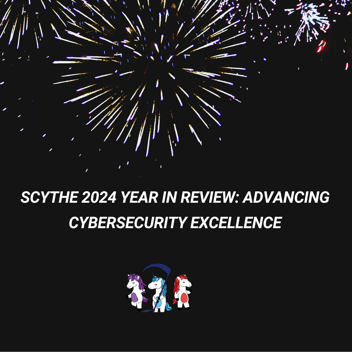For Continuous Threat Exposure Management (CTEM) and Breach and Attack Simulation (BAS), efficiency, scalability, and practicality are paramount for enterprises looking to continuously assess their security posture. SCYTHE’s innovative agent model redefines how enterprises approach BAS testing, delivering a streamlined and targeted methodology that outperforms legacy solutions requiring agents on every endpoint.
Challenges with Legacy BAS Agent Models
Legacy BAS platforms rely heavily on deploying agents to every endpoint within an organization’s network. While this exhaustive approach might seem thorough, it introduces significant inefficiencies and operational challenges:
- Complex Deployment and Maintenance: Deploying agents to hundreds or thousands of endpoints is time-consuming and resource-intensive. Regular updates to these agents add another layer of operational overhead.
- Performance Overhead: Endpoints may experience performance degradation due to constant monitoring and activity logging by the agents.
- Scalability Issues: As organizations grow, managing agents across an expanding environment becomes increasingly unwieldy.
- Limited Practicality: Testing every endpoint often results in redundant data, diluting actionable insights and complicating the analysis.
- Excessive Noise for SOC Analysts: Deploying agents on all endpoints or relying on exhaustive scanning can overwhelm Security Operations Center (SOC) analysts with excessive alerts and false positives. This noise obscures critical threats, creating an environment where analysts may miss high-priority issues.
SCYTHE’s Agent Model: A Smarter Approach
SCYTHE’s agent model takes a fundamentally different approach, emphasizing efficiency and enterprise alignment by deploying agents strategically rather than universally. This method focuses on representative sampling and targeted deployment to maximize the effectiveness of BAS operations while minimizing overhead. Here’s how SCYTHE’s model stands out:
1. Strategic Deployment on Representative Systems & Networks
SCYTHE’s model deploys agents on selected representatives of typical user endpoints, critical systems and network segments, such as:
- Standard laptops and desktops in use across the enterprise.
- High-value servers, including Active Directory (AD) servers and other critical infrastructure.
- Engineering workstations or desktops with elevated privileges.
- Systems within distinct subnets or business units, ensuring comprehensive coverage.
This approach ensures that the testing reflects the organization’s actual deployment scenarios without the need to burden every single endpoint.
2. Effective Testing Across Key Scenarios
By deploying agents on strategically selected endpoints, SCYTHE enables precise testing of:
- Lateral Movement: Evaluate how threats propagate across systems and subnets, identifying chokepoints and exposures in segmentation.
- Data Exfiltration: Simulate exfiltration scenarios from high-value targets to understand potential data loss vectors.
- Representative Threat Activity: Test how deployed security controls respond to realistic attacks in environments that mimic the production ecosystem.
3. Improved Operational Efficiency
With fewer agents to manage, enterprises experience:
-
Reduced Deployment Time: Quick and straightforward agent installation on a manageable number of endpoints.
-
Lower Resource Consumption: Reduced strain on IT and security teams by focusing on critical systems instead of exhaustive endpoint coverage.
-
Simplified Updates and Maintenance: Centralized updates to a small set of agents ensure operational consistency.
4. Actionable Insights with Minimal Noise
SCYTHE’s targeted deployment generates data that is both actionable and relevant, eliminating the noise associated with blanket agent models. This allows organizations to:
-
Prioritize remediation efforts on critical exposures.
-
Obtain clearer insights into their security posture.
-
Streamline reporting for stakeholders.
5. Scalability Without Complexity
As enterprises grow, SCYTHE’s model easily scales without adding unnecessary complexity. New representative endpoints can be quickly identified and integrated into the testing framework, ensuring continuous alignment with the organization’s evolving infrastructure.
Enterprise-Ready: Built for Real-World Needs
SCYTHE’s agent model aligns perfectly with the practical needs of modern enterprises. By focusing on representative sampling, the model enables:
-
Tailored Testing: Reflects the actual risk profile and operational setup of the organization.
-
Enhanced Collaboration: Security teams can work more efficiently with fewer agents to manage and more targeted results to analyze.
-
Cost Efficiency: Reduces the operational and financial burden associated with agent-heavy models.
Conclusion
SCYTHE’s agent model is a game-changer for the effective use of threat emulation and validation. By prioritizing strategic deployment over exhaustive coverage, SCYTHE enables enterprises to conduct meaningful and efficient security testing without unnecessary overhead. Unlike legacy BAS vendors that demand agents on every endpoint—a practice that can balloon costs to the equivalent of adding one to two full-time employees—SCYTHE’s model is cost-conscious and practical. The result? A more resilient organization, better equipped to identify and address exposures, all while maintaining scalability and staying within budget.
